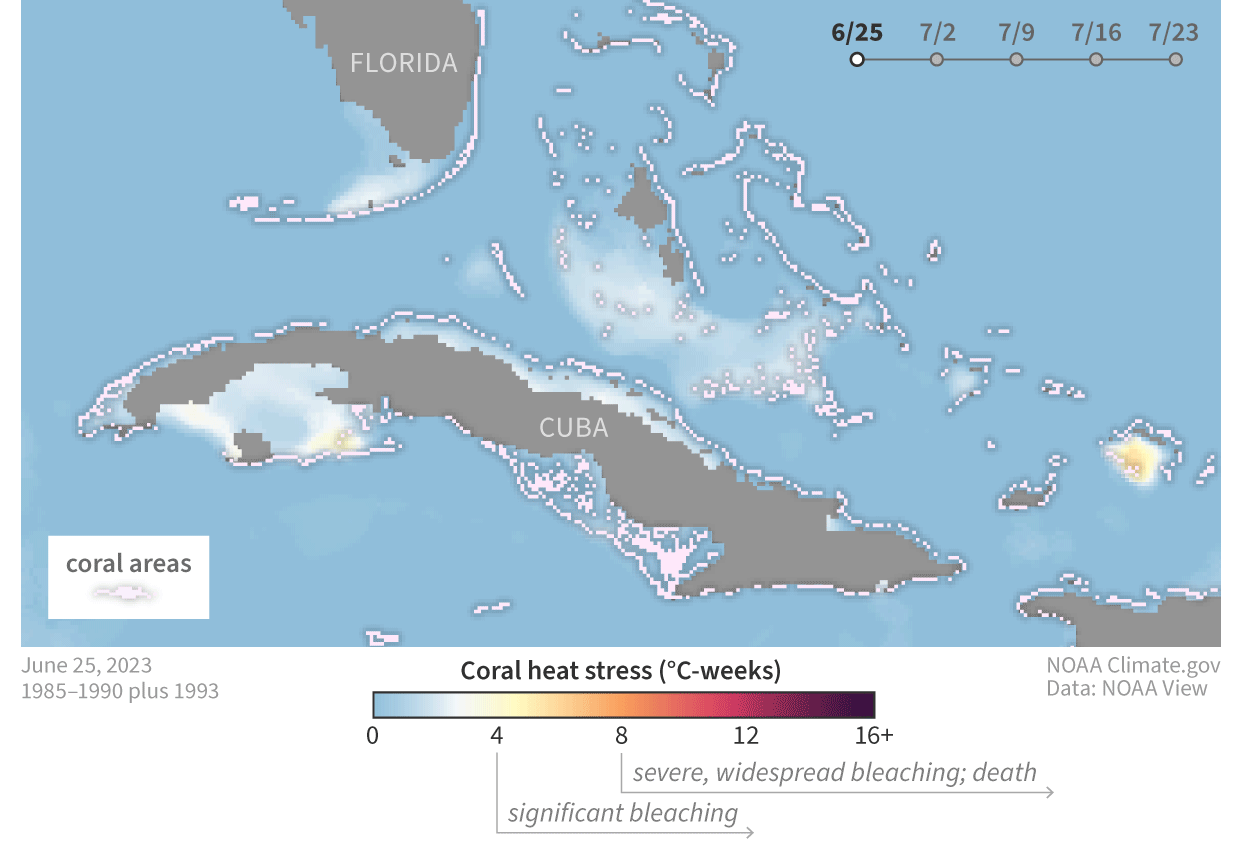Excerpt:
In mid-July 2023, heat-stressed corals in the southern Florida Keys began bleaching—expelling their food-producing algal partners—amid the hottest water temperatures ever documented in the region during the satellite record (dating back to 1985). As weeks of heat stress have continued to accumulate, bleaching and death have become more widespread, raising fears of a mass mortality event on the region’s already fragile reefs..
NOAA and its state agency, university, and non-profit partners in the Mission: Iconic Reef project—Coral Restoration Foundation, Reef Renewal USA, Mote Marine Laboratory, University of Miami, Nova Southeastern University, the Reef Institute, and the Florida Aquarium—are responding to the crisis with a variety of measures that they hope will safeguard the Reef’s remaining live corals, protect corals being grown in underwater nurseries, and preserve live fragments of all genetically unique staghorn and elkhorn coral that remain on Florida’s Coral Reef. Reef conservation teams have already relocated thousands of nursery coral colonies to tanks at the Florida Institute of Oceanography’s Keys Marine Lab for rehabilitation and safekeeping, hopefully for just the short-term…
The last major mass bleaching in the Florida Keys occurred during 2014 and 2015, part of the three-year long global coral bleaching event, which became the longest, most widespread, and most damaging coral bleaching event on record. Responding to questions about the current, severe marine heat stress event, Coral Reef Watch Operations Manager, Jacqueline De La Cour said, “To our knowledge, accumulated heat stress in Florida has not been this intense or widespread, this early in the summer season, since the satellite record began in 1985. Since heat stress in Florida tends to accumulate into September, and NOAA Coral Reef Watch’s modeled Four-Month Coral Bleaching Outlook for the Florida Keys suggests it may persist for longer than that, it is possible that the environmental damage, which, in the last few weeks, includes mass coral bleaching and mortality, will exceed what has been reported so far.”
Among the possibilities, added Coral Reef Watch Director Derek Manzello, is that the damage and mortality will continue to spread from the lower and middle Keys northward to the reefs off Southeast Florida. “The bleaching-level heat stress has been creeping north over the past several weeks and is now encompassing almost the entirety of Florida’s Coral Reef,” Manzello reported in a Thursday morning briefing.
Some of the reports coming in from NOAA’s coral reef restoration partners are grim…
Additional Links:









